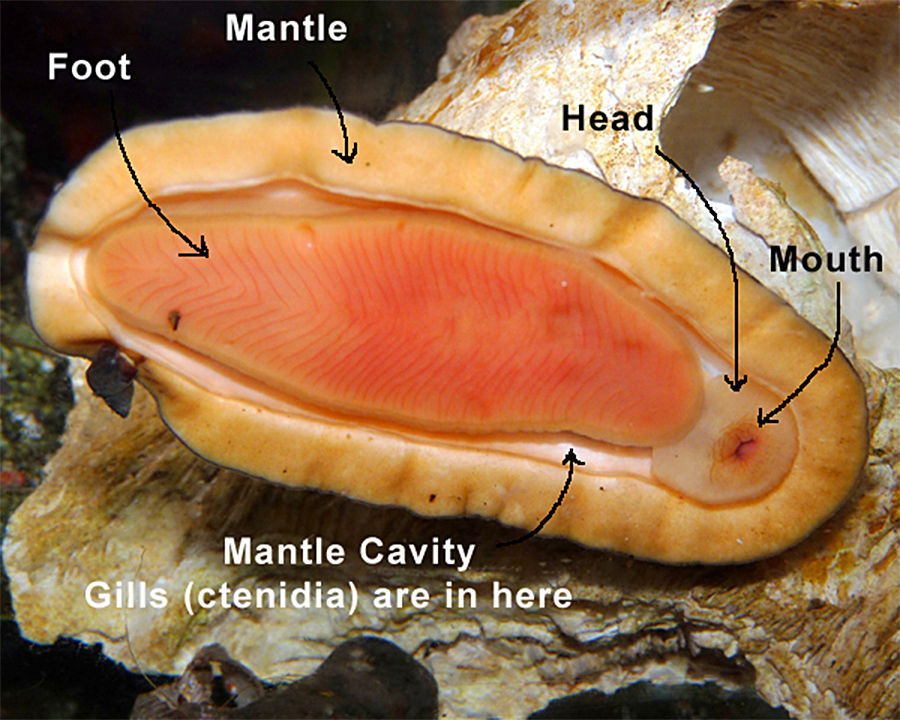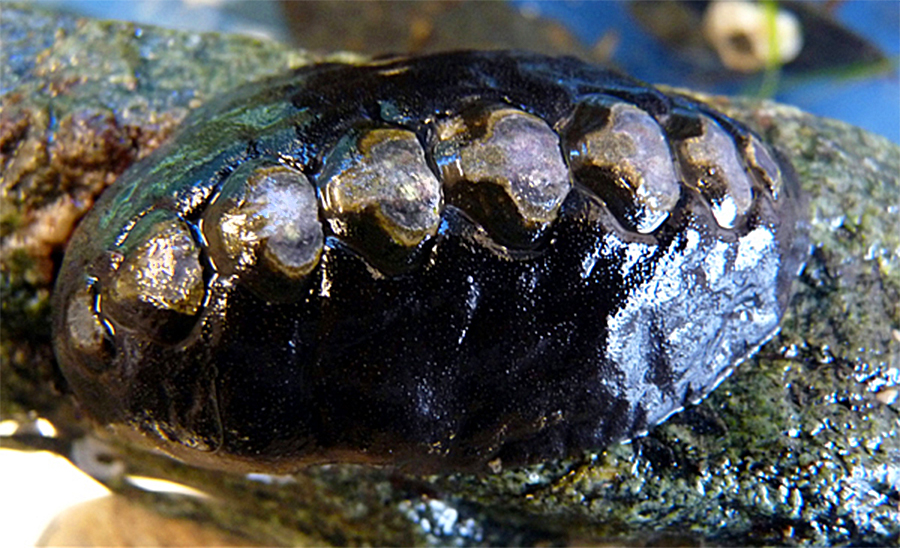Author: Sarayut Uddy Klongchoengrob
Common Names: Black Katy Chiton, Black Leather Chiton
Scientific name: Katharina tunicata
Size: to 15cm in length
Identifying Features: The black Katy chiton is oval shaped and has 8 white over-lapping plates on top of its leathery black mantle. It can grow to around 15cm in length. It has a large muscular foot to help it move and in the mantle cavity around its bottom edge they rows (the mantle cavity) that contain around 50-60 gills called ctenidia that they use for respiration. Underneath the chiton you will see the head and mouth in front of the foot. It does not have any eyes or tentacles, but its shell has light-sensitive organs.

Habitat: black Katy chitons are commonly found in the San Jaun Islands and Straight of Jaun de Fuca. They are found intertidally and occur up to around 40 meters in depth. They are mostly found attached to rocks and they are unique compared to other chitons because they tolerate direct sun light.
Food: Black Katy chitons like other chitons, feed by slowly grazing on brown and red algae using a long rasping structure known as a radula. It is also known to have eaten small sponges and tiny barnacles.
Predators: Black Katy chitons have only a hand full of predators such as sea urchins, the Leather Star (Dermasterias imbricata), and Oystercatchers (Haematopus bachmani). They avoid being eaten by blending in to their surrounding by being a really dark color with contrasting white plates which breaks up their shape. Algae sometimes may grow on top of them allowing them to blend in more with their surroundings. They also have a hard mantle and can be tightly attached to rock making them very hard to remove.
Life Cycle: The black Katy chiton reproduces out the body where the male releases sperm into the ocean and the female releases her eggs. Following fertilization it hatches into a free swimming trochophore larva. The larva then elongates and the shell gland secretes the plates of the shell. There is no intermediate stage.
References
Doyle, B. 2001. “Katharina tunicata” Retrieved January 26, 2013 from http://animaldiversity.ummz.umich.edu/accounts/Katharina_tunicata/
Harbo, Rick M. (1999). Whelks To Whales. Coastal Marine Life of the Pacific Northwest. Harbour Publishing, Vancouver, British Columbia.
Lunsford, Ryan 2002, “Katharina tunicata” Retrieved January 25, 2013 from http://www.wallawalla.edu/academics/departments/biology/rosario/inverts/Mollusca/Polyplacophora/Katharina_tunicata.html

